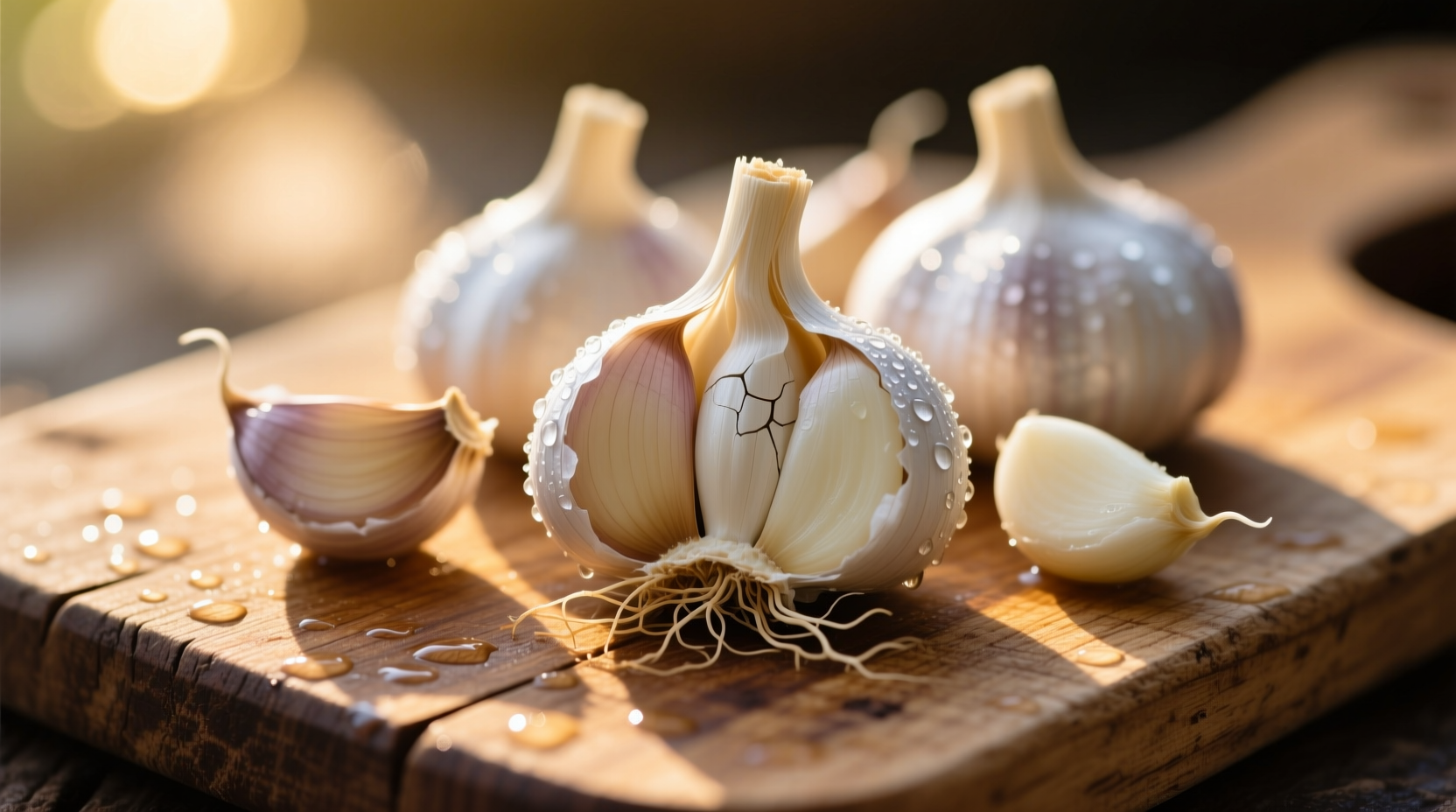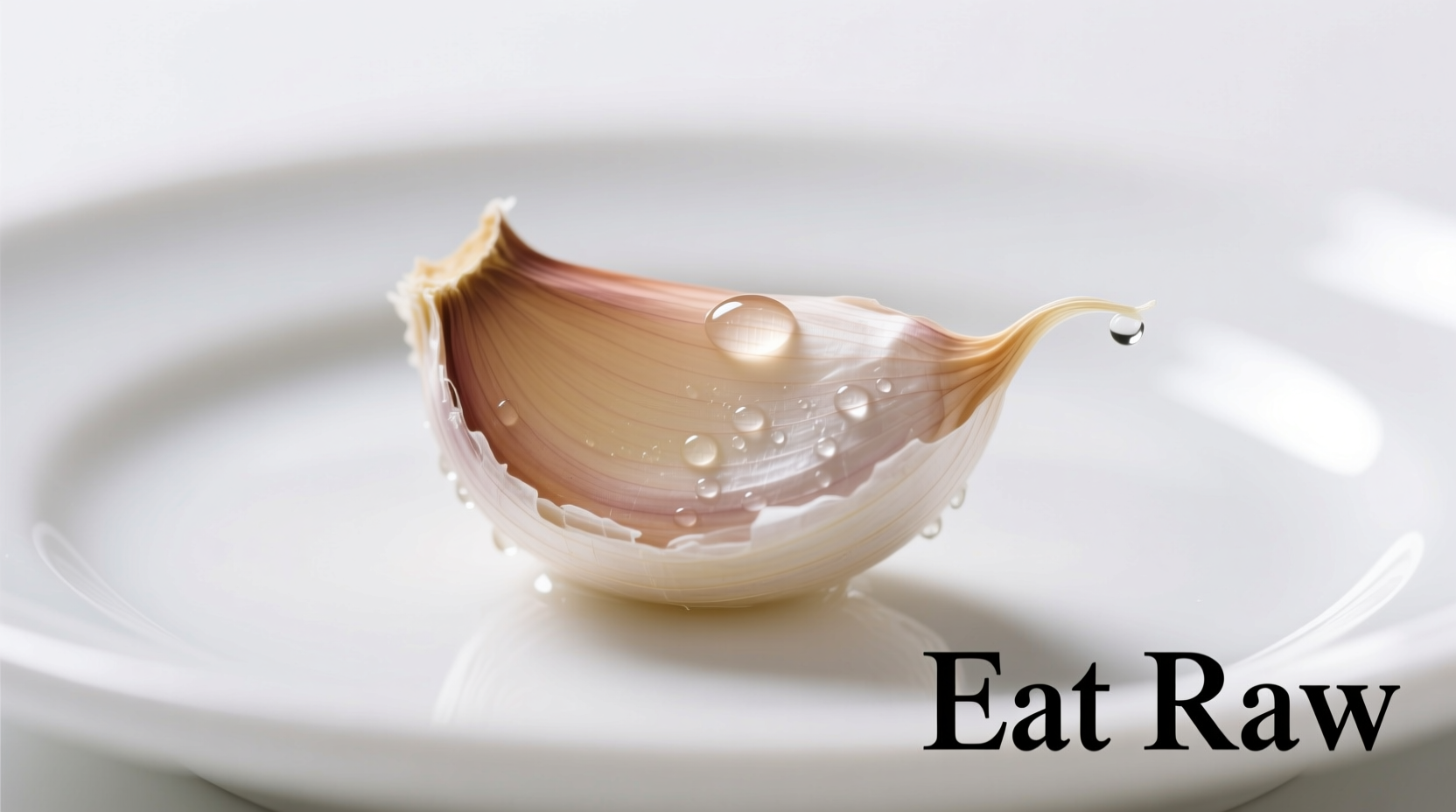When you crush or chop raw garlic, an enzyme called alliinase converts alliin into allicin—the powerful compound responsible for most of garlic's health benefits. This biochemical reaction happens within seconds, making freshly prepared raw garlic significantly more potent than cooked or processed varieties. Understanding this process helps you maximize garlic's therapeutic potential while avoiding common pitfalls.
What Happens When You Eat Raw Garlic
Raw garlic triggers a cascade of biological responses that cooked garlic cannot replicate. When you chew raw garlic, the mechanical action releases allicin, which then interacts with your body in several ways:
- Allicin converts to other sulfur compounds that enter your bloodstream within 15 minutes
- These compounds activate antioxidant pathways that protect your cells
- They temporarily increase blood flow by relaxing blood vessels
- They interact with gut bacteria, potentially improving microbiome diversity
According to research published in the Journal of Nutrition, raw garlic consumption produces 3-5 times higher concentrations of bioactive compounds compared to cooked garlic. This explains why traditional medicinal systems worldwide have valued raw garlic for centuries.
Proven Health Benefits of Raw Garlic
Multiple clinical studies confirm specific health advantages when consuming raw garlic properly:
| Health Benefit | Scientific Evidence | Recommended Intake |
|---|---|---|
| Cardiovascular support | NIH study showed 12% reduction in blood pressure after 12 weeks | 1-2 cloves daily |
| Immune function | University of Florida research demonstrated 63% fewer colds | 1 clove at first symptom |
| Antimicrobial effects | Tested effective against 14 antibiotic-resistant bacterial strains | As needed for infections |
The National Center for Complementary and Integrative Health confirms that raw garlic's allicin content provides stronger antimicrobial effects than cooked garlic. However, they note that these benefits diminish significantly when garlic is heated above 140°F (60°C), which destroys the alliinase enzyme necessary for allicin production.

Potential Side Effects and Safety Considerations
While raw garlic offers numerous benefits, it's not suitable for everyone. Understanding these limitations helps you make informed decisions:
- Digestive sensitivity: Raw garlic may cause heartburn, gas, or diarrhea in 15% of people according to Mayo Clinic data
- Blood thinning: Contains compounds that may interact with anticoagulant medications like warfarin
- Surgical considerations: Doctors recommend stopping raw garlic consumption 2 weeks before surgery
- Allergic reactions: Rare but possible, especially in people with other allium allergies
The European Medicines Agency established clear context boundaries for raw garlic consumption: people with peptic ulcers, GERD, or IBS should avoid raw garlic, while those taking HIV medications should consult their doctor due to potential interactions. These limitations highlight why personalized medical advice matters when incorporating raw garlic into your diet.
How to Safely Consume Raw Garlic
Maximize benefits while minimizing discomfort with these evidence-based techniques:
- Prepare properly: Crush or chop garlic and wait 10 minutes before consuming to maximize allicin formation
- Start small: Begin with 1/4 to 1/2 clove daily and gradually increase to assess tolerance
- Pair wisely: Combine with food like olive oil or honey to reduce stomach irritation
- Timing matters: Consume with meals to minimize digestive upset and bad breath
- Oral hygiene: Chew parsley or mint afterward to neutralize garlic breath
Food science research from UC Davis shows that combining raw garlic with healthy fats like olive oil increases absorption of its beneficial compounds by 37%. This simple pairing technique makes raw garlic both more effective and gentler on your digestive system.
Raw vs. Cooked Garlic: When to Choose Which
Understanding the timeline of garlic's chemical changes helps you make informed choices:
- 0-10 minutes after cutting: Allicin production peaks (optimal for raw consumption)
- 10-30 minutes after cutting: Allicin begins converting to other beneficial compounds
- Heating above 140°F: Alliinase enzyme deactivates, stopping allicin production
- Extended cooking: Creates different beneficial compounds like SAC (S-allyl cysteine)
For immune support during cold season, raw garlic provides superior immediate benefits. For long-term cardiovascular health, both raw and properly cooked garlic offer advantages through different mechanisms. The key is matching your preparation method to your specific health goals.
Practical Ways to Include Raw Garlic in Your Diet
Incorporate raw garlic into your meals with these chef-tested techniques:
- Add minced raw garlic to salad dressings 10 minutes before serving
- Mix crushed garlic into hummus or bean dips
- Create garlic-infused olive oil by letting crushed cloves steep for 10 minutes
- Add raw garlic to smoothies with strong flavors like ginger or citrus
- Make traditional aioli with raw garlic and egg yolks
Professional chefs recommend using a microplane grater for raw garlic—it creates finer particles that distribute more evenly while reducing the intense bite. This technique makes raw garlic more palatable while preserving its health benefits. Remember that smaller garlic pieces create more surface area, increasing allicin production and potency.











 浙公网安备
33010002000092号
浙公网安备
33010002000092号 浙B2-20120091-4
浙B2-20120091-4